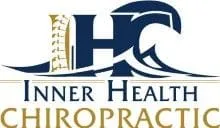While women are learning more and more about cervical cancer and its prevention, another "silent killer" remains relatively mysterious among doctors and patients alike. Ovarian cancer is only the seventh most common cancer among women, but it causes more deaths than any other cancer of the female reproductive system. Unfortunately, efficacy of early screening is negligible only because symptoms of the disease are vague and misdiagnosis is common.
What to look for
Most cases of ovarian cancer occur among women over 50 years of age, however the disease can occur in younger women. And risk increases if family members have been diagnosed with the disease.
In a recent study at the University of Washington School of Medicine identified the six symptoms most often and closely associated with ovarian cancer. Researchers compared the clinical histories of women diagnosed with the disease to the histories of "high-risk" women who did not have the disease.
The most common complaints among those women with cancer included the following:
- Pelvic pain
- Abdominal pain
- Increased abdominal size
- Abdominal bloating
- Difficulty eating
- Feeling full quickly
Any one of these symptoms was considered predictive of ovarian cancer risk if it had been present for less than one year, more than 12 days a month. Conceivably, it would be easy to assume these symptoms resultant of premenstrual syndrome or menses itself. Bloating, abdominal bloating and a feeling of fullness are also common symptoms of irritable bowel syndrome (IBS).
Awareness is key
The message here is to take these symptoms very seriously, especially those lasting longer than two weeks a month, as they may be more than PMS or digestive discomfort. Address your doctor's questions regarding family history with utmost thoroughness. Awareness - among both patients and doctors - is the first line of defense. And for those suffering from ovarian cancer, regular chiropractic care has been proven time and again to ease pain and improve quality of life during the healing process. A 2001 study published in the peer-reviewed Journal of Manipulative Physiological Therapeutics followed a 54-year-old patient who was able to cease all pain medication following only two chiropractic visits! The focus of chiropractic care is not to directly treat pain, but more specifically, to assist the body in healing itself. Studies show that cancer patients who see their chiropractor experience pain less frequently and to a lesser degree.
